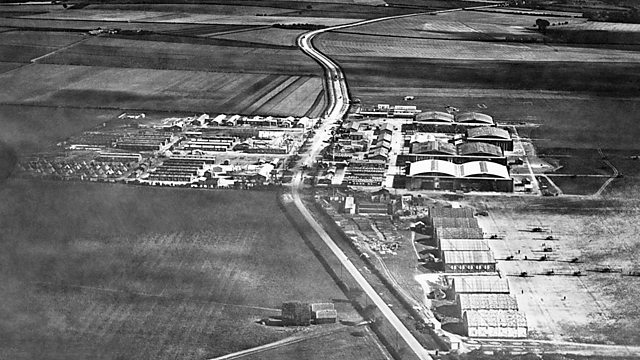Duxford, Cambridgeshire: Training War Pilots
How the Duxford pilots learned to fly in just 20 minutes
The aerodrome at Duxford was built during World War One and became one of the earliest Royal Air Force stations.
On 1 April 1918 the Royal Naval Air Service and the Royal Flying Corps were merged to become the Royal Air Force, the world's first fully independent air force.
In September 1918, Duxford opened as a flying school and was known as ‘No. 35 Training Depot Station’ where the flat landscape offered a perfect site for the early days of aviation testing and training.
Cadets began their ‘air experience’ around the Duxford Aerodrome with an instructor lasting just 20 minutes at a time. The intense training included: how to be a good soldier, how to map-read, signalling with Morse code and how the aircraft engine worked, and, of course, how to fly the plane all within a very short space of time.
The grass airfield runway was the gateway to the skies for the Airco/de Havilland DH6 and DH9 aircraft used for training. Cadets flew with an instructor for just 16 hours then perfected their skills flying solo with most cadets graduating after just four months.
Duxford is now a branch of the Imperial War Museums and the runway is still very much in use with flying clubs, demonstrations and air shows. The original WW1 hangers are still there, standing proud as fitting backdrops to the busy skies.
Collections Manager at Duxford, Carl Warner, uncovered a flying log belonging to Flight Cadet James Airey who served during both wars. Through his words, we get a sense of the working lives of the young cadets who had, by today’s standards, little training on a machine that was really only tested once live, over the skies of the enemy.
Location: Duxford, Cambridgeshire CB22 4QR
Image shows Duxford, courtesy of Imperial War Museums
Presented by Collections Manager at Duxford, Carl Warner
Duration:
This clip is from
Featured in...
![]()
�鶹�� Radio Cambridgeshire—World War One At Home
Places in Cambridgeshire that tell a story of World War One
![]()
War in the Air—World War One At Home
Zeppelin raids and aviation heroics
More clips from World War One At Home
-
![]()
The loss of HMY Iolaire
Duration: 18:52
-
![]()
Scotland, Slamannan and the Argylls
Duration: 07:55
-
![]()
Scotland Museum of Edinburgh mourning dress
Duration: 06:17
-
![]()
Scotland Montrose 'GI Brides'
Duration: 06:41







